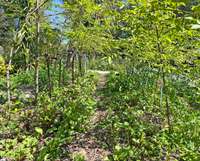Guazuma ulmifolia, also known as West Indian elm or “guacimo,” sustains the livestock of many small farmers at the end of the dry season when grasses are scarce. It is one of the first perennial plants to establish in degraded or disturbed areas.
Uses
Growers manage G. ulmifolia trees for the regeneration of fodder or fuelwood. Oxford Forestry Institute-Centro Agronómico Tropical de Investigación y Enseñanza (OFI-CATIE; 2003) recommends when managing trees for fuel, plant densities of 2000 to 3000 trees per hectare, expecting yields of up to 310 kg of green firewood per mature tree. With 18 trees cut every 4 years (a total of 72 trees), a smallholder can produce enough fuel for a year. Managed plantings produce a volume of 9.5 m³/ha/year part of which growers can use for fodder or mulch. Before the widespread adoption of plastic products, G. ulmifolia wood, light and easy to work, was used to make crates and simple items. Now it is commonly used for charcoal production and fuelwood.

Figure 21. Annual leafy greens growing under Guazuma ulmifolia trees at ECHO in Florida. Source: Tim Motis
G. ulmifolia is not leguminous but works well in agroforestry plantings (Figure 21). Research shows that mixed fodder banks of leucaena and guacimo are a better choice for improving productivity and forage quality in comparison with pure fodder banks of G. ulmifolia or leucaena alone (Casanova-Lugo et al., 2014). In the rainy season, collect clippings for forage from a height of 25 cm allowing a regrowth period of 60 days (Cediel Devia et al., 2020). In the dry period, prune to a height of 50 cm, allowing 60 days for regrowth.
Native to the Americas, G. ulmifolia is found throughout the world and featured in traditional Indian medicine. An infusion or tea from various parts (stems, leaves, and bark) of the tree has been used to treat diarrhea, dysentery, coughs, and colds, along with anecdotal treatments from baldness to venereal disease (Shekhawat, 2021). G. ulmifolia is considered a general diuretic and astringent. Phenolic compounds and flavonoids give G. ulmifolia its antiviral and antimicrobial properties (Patil and Biradar, 2013).
Cultivation
G. ulmifolia seeds have a natural gummy or mucilaginous coating that needs to be removed before planting. Treat seeds in boiling water (30 seconds) or 80°C for 1 to 2 minutes, then soak treated seeds in room temperature water for 24 hours (OFI-CATIE, 2003). Plant two to four seeds per nursery bag, thin to one strong seedling, and then let plants grow 30 to 40 cm (14 to 16 weeks in the nursery) before transplanting. G. ulmifolia reproduces from stem cuttings but plants from cuttings will not develop a taproot as seedlings will. Stem cuttings should have a diameter of 1.5 to 2.5 cm before transplanting (5 to 8 months in the nursery). Large diameter cuttings of G. ulmifolia can be used to make an effective fence but may require extra support from other seedlings raised in the nursery, stronger posts, or barbed wire.
G. ulmifolia prefers well-drained, moderately acidic to alkaline soil and elevations below 400 m. It grows at elevations up to 1200 m in parts of Guatemala and Honduras. G. ulmifolia grows well with 500 to 1700 mm of rainfall and 10° to 36°C (optimal 700 to 1500 mm rainfall and 22 to 32°C temperature). Its main pest is a weevil, Phelypera distigma (order Coleoptera), and to a lesser extent a stem boring moth, Aepytus sp. (order Lepidoptera).
Try G. ulmifolia to produce fodder, fuelwood, or to diversify your agroforestry system. Active development workers who are ECHOcommunity members may request a trial packet of this or other seed. (See the website to register and learn how to order seeds.)
References
Casanova-Lugo, F., J. Petit-Aldana, F.J. Solorio-Sánchez, D. Parsons, and L. Ramírez-Avilés. 2014. Forage yield and quality of Leucaena leucocephala and Guazuma ulmifolia in mixed and pure fodder banks systems in Yucatan, Mexico. Agroforestry Systems. 88(1):29–39.
Cediel Devia, D., E. Sandoval Lozano, and R. Castañeda Serrano. 2020. Effects of different regrowth ages and cutting heights on biomass production, bromatological composition and in vitro digestibility of Guazuma ulmifolia foliage. Agroforestry Systems. 94(4):1199-1208.
OFI-CATIE. 2003. Arboles de Centroamérica. Un Manual para Extensionistas. Cordera, J. and Boshier, D.H. (Editors). OFI-CATIE. Turrialba, Costa Rica.
Patil, J. and S.D. Biradar. 2013. Pharmacognostic study of Guazuma ulmifolia. International Research Journal of Pharmacy. 4(4):130-131.
Shekhawat, N. 2021. Guazuma ulmifolia: A review on its traditional uses, phytochemistry and pharmacology. Medicinal & Aromatic Plants 10:374.